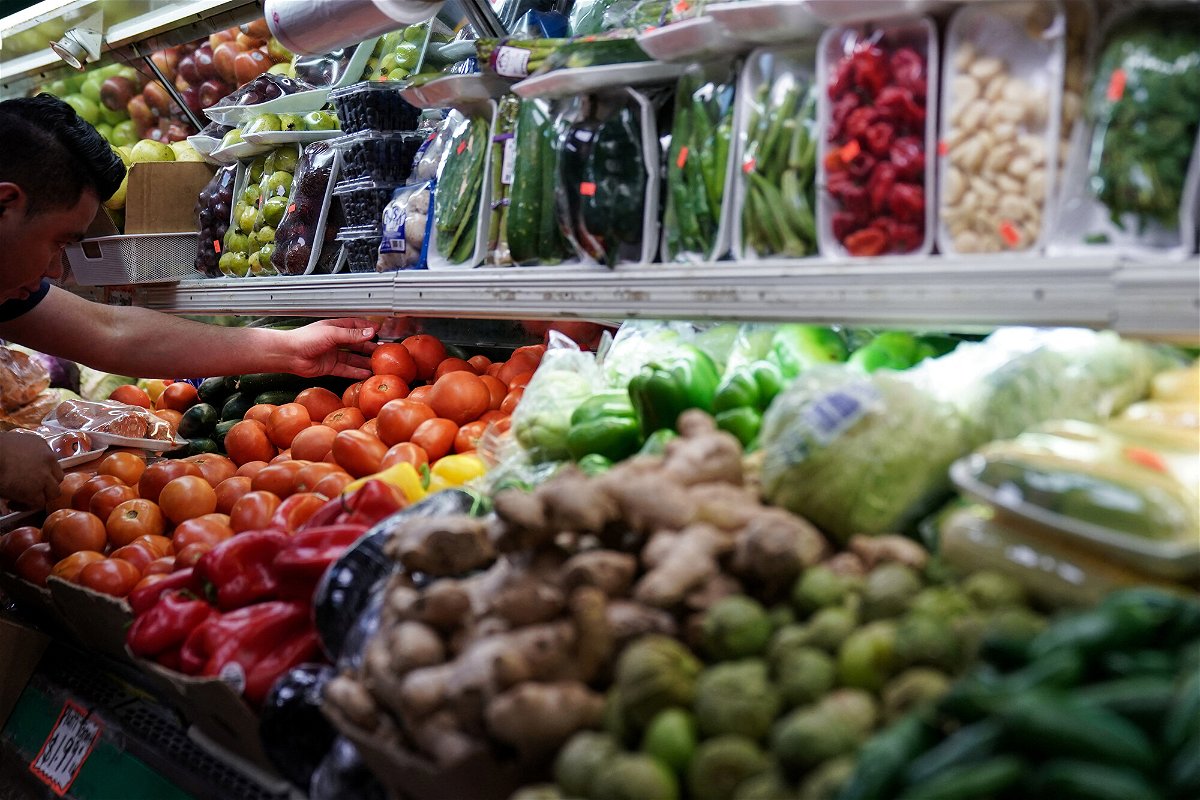Inflation may be easing, but grocery prices are still way up

Prices are still rising in the grocery store.
By Danielle Wiener-Bronner, CNN
Once again, food inflation is outpacing overall inflation.
In the year through November, food got 10.6% more expensive, with grocery prices rising 12% and menu prices jumping 8.5%, not adjusted for seasonal swings, the Bureau of Labor Statistics said Tuesday. In that same period, overall inflation rose 7.1%.
Food prices are affected by a number of factors, including extreme weather, diseases impacting crops and livestock, supply chain complications and geopolitical unrest including the war in Ukraine. That makes it more difficult for the US government to use tactics like raising interest rates to moderate food prices.
A number of pantry and refrigerator staples continued to get more expensive last month, the latest data shows. Eggs, which have been affected by the deadly avian flu, were a staggering 49.1% more expensive through November, and butter prices, hit by a contraction in the milk supply, shot up 27%.
Flour prices jumped 24.9%, bread went up 15.7%, milk was 14.7% more expensive and coffee prices rose 14.6%. Chicken was up 12% and fruits and vegetables spiked 9.7%.
There were some items that got cheaper over the course of the year, particularly in the meat aisle.
Uncooked beef roasts fell 8.1%, and uncooked beef steaks dropped 7.4%. Pork roasts, steaks and ribs slipped 5.1%, and bacon ticked down 1.1%.
What happened in November
Grocery and menu prices in November each went up 0.5% from the prior month, adjusted for seasonal swings.
Many individual items got even more expensive, with lettuce taking the lead with an 8.9% spike. The US lettuce supply has been hurt by crop disease: In California, where much of it is grown, there was a “high incidence of virus infection that has affected the crop pretty significantly in some fields,” Almuhanad Melhim, a fruit and vegetable analyst at Rabobank, previously told CNN. “That led to really low supply and low quality of lettuce.”
Last month, eggs and fresh fruit each got 2.3% more expensive, and bread and ice cream each rose 2% from October.
In restaurants, where traffic has been slowing as consumers tighten their belts, menu prices went up, but not by much. At limited-service restaurants, menu prices rose 0.6%, while prices at full-service restaurants ticked up 0.4%.
There were some bright spots in the grocery aisle, too, compared to last month.
Bacon fell 1.8%. Uncooked beef roasts fell 1.3% and uncooked ground beef dropped 0.9%. Chicken, which is overcoming some supply issues, went down 0.8%, while fresh fish and seafood dropped 1.4%. Potatoes also got 1.4% cheaper, and margarine prices fell 2.3%.
But the declines in beef prices may not last long. Cattle ranchers, facing devastating droughts, have recently been selling cattle for slaughter in high numbers. The supply glut will have consequences down the road, likely leading to a squeeze in supply that would raise prices in the future.
The-CNN-Wire
™ & © 2022 Cable News Network, Inc., a Warner Bros. Discovery Company. All rights reserved.